Research Frontiers
The Research Frontiers talks are aimed primarily at first year students but students from other years are encouraged to come along as well. They generally take place on Thursdays at 5pm but sometimes are scheduled for other days/times. They are always followed by a social gathering with drinks and nibbles.
The world leading research going on at Imperial College is one of the key factors in students choosing to study here. The Research Frontiers lectures are an opportunity for you to find out something about the research going on here at the Blackett Laboratory. The department has nine research groups covering all the main areas of modern physics. Each research group takes responsibility for one Research Frontiers talk. They nominate an exciting speaker and encourage their staff and PhD students to attend the lecture and to mingle with students at the social gathering after it. This is a golden opportunity for students to meet staff and find out what real research is like. If you are interested in looking for a UROP placement within the department this might be one of the best ways of making contacts with members of staff.
Research Frontiers Lectures
2022-23 Lectures
 Talk Title: Black Holes and Quantum Spacetime
Talk Title: Black Holes and Quantum Spacetime
Date: 27 October 2022 at 17:00 (BST)
Location: Blackett Lecture Theatre 1
Speaker: Prof Jerome Gauntlett, Theoretical Physics Group
Abstract: Black holes are structures in the fabric of spacetime and are amongst the most extraordinary objects known to exist in the universe. In addition to their astrophysical significance, black holes also provide profound clues in the ongoing quest of constructing a theory of quantum gravity that unifies Einstein's theory of General Relativity with the quantum laws of physics. Developments in string theory, a most promising framework for quantum gravity, have illuminated our understanding of the quantum properties of black holes and the nature of quantum spacetime. The goal of the talk is to give a flavour of some of these striking theoretical developments.
 Talk Title: Clouds in the Earth System - the impact of pollution
Talk Title: Clouds in the Earth System - the impact of pollution
Date: 10 November 2022 at 17:00 (GMT)
Location: Blackett Lecture Theatre 1
Speaker: Dr Ed Gryspeerdt,
Abstract: Clouds are an important part of the Earth system, not only as part of the water cycle, but for regulating the amount of energy absorbed and emitted by the Earth. The physics of clouds spans many orders of magnitude, from atmospheric aerosol nucleation processes at a nanometre scale to the dynamics of storm systems at 1000 km across. These processes interact in complex ways, making changes in cloud properties in response to human activity one of the largest uncertainties in past and future climate change. In this talk, we will show how multiple different satellite instruments (visible/IR imagers, radar and passive microwave) can be used to understand cloud and measure behaviour at a global scale. Combining these large datasets with information about pollution from ships and aircraft, we show how satellite data can quantify the response of clouds to human activity, monitor international pollution agreements and help us better understand our changing climate. Talk Title: Imprints of birth: how the birth cluster can affect stars and planetary systems
Talk Title: Imprints of birth: how the birth cluster can affect stars and planetary systems
Date: 24 November 2022 at 17:00 (GMT)
Location: Blackett Lecture Theatre 1
Speaker: Dr Christina Schoettler, Astrophysics Group
Abstract: Most stars form in grouped or clustered environments with other stars. These star-forming regions can survive for millions of years but can change dramatically over just a short period of time - either collapsing under their own gravity or expanding. So what we see today might not be what they looked like initially during their formation. While a cluster is contracting or expanding, stars can pass very close to each other. This can lead to stars being flung out of the birth region to become runaway stars. Planets that might already exist in an exoplanet system may have their orbits altered compared to their formation, be ejected from their systems or stolen by passing stars.
In this lecture, I will discuss how simulations and observations can be used to investigate these interactions. I will talk about how the number and distribution of runaway stars can tell us something about the initial conditions of these regions. How observations from telescopes like Gaia, which orbits in space with the Earth around the Sun, can be used to search for these ejected stars in the night sky. I will then move on to the planetary systems and how they are affected and possibly altered by interactions in their birth environment. This can have implications for our understanding of their formation mechanisms.  Talk Title: LhARA; a step on the way to precision, personalised particle-beam therapy
Talk Title: LhARA; a step on the way to precision, personalised particle-beam therapy
Date: 8 December 2022 at 17:00 (GMT)
Location: Blackett Lecture Theatre 1
Speaker: Prof Kenneth Long
Abstract: Cancer is the second most common cause of death globally. In 2018, 18.1 million new cancer cases were diagnosed, 9.6 million people died of cancer-related disease, and 43.8 million people were living with cancer. Radiotherapy (RT) is used in 50% of cancer patients and is involved in 40% of cancer cures. It is estimated that 26.9 million life-years could be saved in low- and middle-income countries if capacity could be scaled up. The beam characteristics that can be exploited in proton- and ion-beam therapy (IBT) facilities today are restricted to low dose rates, a small number of temporal schemes, and a small number of spatial distributions. The use of novel beams with strikingly different characteristics has led to exciting evidence of enhanced therapeutic benefit. This evidence, together with developments in our understanding of personalised medicine based on the biology of individual tumours, now provides the impetus for a radical transformation of IBT.
The ‘Laser-hybrid Accelerator for Radiobiological Applications’, LhARA, is conceived as a novel, uniquely flexible facility dedicated to the study of radiobiology. The technologies that will be demonstrated in LhARA have the potential to allow particle-beam therapy to be delivered in a completely new regime, combining a variety of ion species in a single treatment fraction and exploiting ultra-high dose rates. The laser-hybrid approach will allow the exploration of the vast “terra incognita” of the mechanisms by which the biological response is modulated by the physical characteristics of the beam. I will describe the motivation for LhARA, present the status of its development and summarise the programme upon which the LhARA consortium has embarked to drive a step-change in clinical capability.
Talk Title: First Results and Status of the LUX-ZEPLIN (LZ) Experiment
Date: 2 February 2023 at 17:00 (GMT)
Location: Blackett Lecture Theatre 1
Speaker: Dr Nicolas Angelides
Abstract: The LUX-ZEPLIN (LZ) direct dark matter detection experiment is currently operating at the Sanford Underground ResearchFacility (SURF) in Lead, South Dakota. LZ recently set new world-leading limits on WIMP-nucleus interactions above 9 GeV/c^2 with its first science run (SR1). This talk will detail these results, the status and outlook of the project.
Talk Title: Engineering Magnonic Metamaterials for Low Energy Neuromorphic Computing
Date: 16 February 2023 at 17:00 (GMT)
Location: Blackett Lecture Theatre 1
Speaker: Dr Jack Carter-Gartside
Abstract: TBC
Talk Title: Measuring ultrafast processes in physics, chemistry, biology and materials with short x-ray pulses
Date: 2 March 2023 at 17:00 (GMT)
Location: Blackett Lecture Theatre 1
Speaker: Prof Jon Marangos
Abstract: This will review the current state of scientific progress using ultrafast x-ray sources, from high harmonic laser driven sources to x-ray free electron lasers. The basic measurement methods of x-ray spectroscopy and x-ray scattering will be briefly introduced, followed by an overview of recent high impact results using XFELs. It will highlight recent work in Blackett using high harmonics to study exciton dynamics in organic photovoltaics and discuss how XFELs are now uncovering the attosecond quantum dynamics in following photoionisation of matter. It will examine the Science Case for a new next generation XFEL that may be built in the UK.
Talk Title: Can a discrete spacetime finally solve the dark energy puzzle
Date: 16 March 2023 at 17:00 (GMT)
Location: Blackett Lecture Theatre 1
Speaker: Dr Santanu Das
Abstract: Various cosmological observations indicate that the universe is dominated by dark energy with a negative pressure, one possibility for which is a cosmological constant. If dark energy is a cosmological constant, a fundamental question is: Why has it become relevant at so late an epoch, making today the only time in the history of the universe at which the cosmological constant is of order the ambient density. A novel dark energy model, known as Ever-present Lambda, explores an answer to this question, drawing on ideas from unimodular gravity, and causal set theory. In this model, the universe is fundamentally discrete, and dark energy has a density that is always of the order of ambient energy density. In this talk I will explain the present status and the research work that is going on in the Ever-Present Lambda model.
2021-22 Lectures

Talk Title: Laser Wakefield Accelerators: a particle accelerator in a university lab?
Date: 05 October 2021 at 12:00 (BST)
Location: Blackett Lecture Theatre 1
Speaker: Prof Stuart Mangles, Plasma Physics Group
Watch the lecture recording
Due to capacity restrictions, Lecture Theatre 1 will only be open to Year 1 students in Groups G,H,I,J,K and L for this talk. All other students will be able to live-stream the talk or watch the recording once the talk has finished.
Abstract: Particle accelerators are amazing tools for scientific discovery – but why do they have to be so big? Using the world’s most powerful lasers and the plasmas they create we are developing particle accelerators that are much more compact. In this talk I will explain how these laser-plasma accelerators work, their current capabilities and limitations, and some of the exciting experiments that their unique properties are enabling.
 Talk Title: Nuclear Fusion: Bringing Star Power to the Lab
Talk Title: Nuclear Fusion: Bringing Star Power to the Lab
Date: 08 October 2021 at 11:00 (BST)
Location: Blackett Lecture Theatre 1
Speaker: Dr Aidan Crilly, Centre for Inertial Fusion Studies, Plasma Physics Group
Watch the lecture recording
Due to capacity restrictions, Lecture Theatre 1 will only be open to Year 2 students in Groups A,B,C,D,E and F for this talk. All other students will be able to live-stream the talk or watch the recording once the talk has finished.
Abstract: Recent inertial confinement fusion (ICF) experiments have greatly increased their fusion energy output to approximately 70% of the laser energy used to drive the system. These ICF experiments compress and heat hydrogen isotopes (deuterium (D) and tritium (T)) to pressures and temperatures comparable to the cores of stars. This leads to a rapid rate of nuclear fusion, releasing large amounts of energy in the form of alpha particles and neutrons. The alpha particles can couple their energy back to the fusion fuel, heating it and further increasing the fusion rate. If the initial pressures obtained are high enough and the fuel is well confined, then this alpha heating process can lead to positive feedback and ‘ignite’ the fuel. This has the potential to release more energy than used to compress and heat the fuel. In this talk I will describe the work performed at the Centre for Inertial Fusion Studies in numerically modelling these ICF experiments. In particular, I will describe our work on neutron measurements, the other product of DT fusion which gives us a direct view into the burning plasma. Talk Title: The Mystery of Missing Magnetic Monopoles
Talk Title: The Mystery of Missing Magnetic Monopoles
Date: 28 October 2021 at 17:00 (GMT)
Location: Blackett Lecture Theatre 1
Speaker: Prof Arttu Rajantie, Theoretical Physics Group
Watch the lecture recording
Due to capacity restrictions, Lecture Theatre 1 will only be open to Year 2 students in Groups G,H,I,J,K and L for this talk. All other students will be able to live-stream the talk or watch the recording once the talk has finished.
Abstract: We have all been taught that a magnet always has two poles, north and south, but is that really true? There are good theoretical reasons to believe that magnetic monopoles, elementary particles with a single north or south pole, should exist, but in spite of extensive searches, they have not been found. In this talk, I will explain why we believe magnetic monopoles should exist, how we are trying to find them, what we can learn from our failure to find them so far, and what we could do if we found them.
 Talk Title: Revealing undiscovered forces using an array of ultracold molecules
Talk Title: Revealing undiscovered forces using an array of ultracold molecules
Date: 11 November 2021 at 17:00 (GMT)
Location: Live online via MS Teams
Speaker: Dr. Jongseok Lim, Centre for Cold Matter
Watch the lecture recording
Abstract: The Standard Model of particle physics is one of the greatest achievements of modern science. It has been fabulously successful in classifying the fundamental particles and explaining how they behave. Nevertheless, it is widely accepted that the Standard Model is incomplete because it fails to explain several important observations. One prominent example is the excess of matter over antimatter in the universe. The Standard Model predicts almost equal amounts of matter and antimatter, but observations show the universe contains only matter. This contradiction is one of the great unsolved problems in modern physics and a major deficiency of our most fundamental theory.
To build a more complete picture of the universe, physicists are striving to reveal what lies beyond the Standard Model. This is an important objective of much of the research being done at gigantic particle accelerators. There is an alternative, and ingenious, way to explore the same problem – measure the shape of an electron. The new forces needed to explain the matter/antimatter imbalance make electrons slightly non-spherical. This distortion – known as the electric dipole moment - changes the energy of an electron in an electric field, and that tiny change is amplified when the electron is bound to a molecule. In this seminar, I will present my plan on how to build an apparatus that uses an array of molecules cooled to microkelvin temperatures to make an extremely precise measurement of the electron’s shape. With very careful measurements, such table-top experiments will enable us to probe energies equal to, or even above, those reached by the particle accelerators.
Biography: Dr. Jongseok Lim is an Ernest Rutherford Fellow at the Department of Physics, Imperial College London. His research interests are in ultrafast quantum optics and ultracold molecular physics. He is especially interested in the applications of ultrafast and ultracold technologies in quantum science and tests of fundamental physics via precision measurement. His research work opens a path to the use of ultracold molecules for low-energy precision measurement that can test physics beyond the Standard Model of particle physics up to 1000 TeV energy scale. Talk Title: The Cassini Spacecraft Mission at Saturn
Talk Title: The Cassini Spacecraft Mission at Saturn
Date: 25 November 2021 at 17:00 (GMT)
Location: Blackett Lecture Theatre 1
Speaker: Prof Michele Dougherty, Space and Atmospheric Physics Group
watch the lecture recording
Abstract: In September 2017, the NASA/ESA Cassini-Huygens spacecraft mission ended its 20 years in space by burning up in Saturn’s atmosphere. The end of mission orbits were designed to better understand the interior of Saturn and its magnetic field. These end of mission results will be described as well as some of the other surprising discoveries made during the orbital tour at Saturn, including water vapour plumes at the small moon Enceladus and implications this has for potential habitability.
Biography: Michele Dougherty is a space physicist who is leading unmanned exploratory missions to Saturn and Jupiter. Amongst other important findings, her work led to the discovery of an atmosphere containing water and hydrocarbons around Saturn’s moon Enceladus — opening up new possibilities in the search for life.
 Talk Title: Superconducting Spintronics
Talk Title: Superconducting Spintronics
Date: 9 December 2021 at 17:00 (GMT)
Location: Live online via MS Teams
Speaker: Prof Lesley Cohen, Experimental Solid State Physics Group
watch the lecture recording
Abstract: At temperatures near absolute zero, some metals lose their electrical resistance and become superconductors of electricity. Prof. Lesley Cohen of Imperial College London describes how superconductivity was discovered, and its underlying quantum nature with electric current carried by particles behaving coherently. She will touch upon the longstanding search for superconductivity at room temperature; and her own research in the area of superconducting spintronics marrying the spin polarization properties of ferromagnets with the zero ohmic loss properties of superconductors.
Biography: Lesley Cohen is head of Experimental Solid State Physics in the Blackett laboratory at Imperial College. Her research work is positioned at the interface between fundamental understanding and enabling science in magnetic, superconducting and semiconducting materials with an emphasis on materials for energy efficient use. She has been fortunate to work with many brilliant young people and collaborators across the world with whom she has published over 400 research papers with an h index of 47. Lesley won the first Julia Higgins Medal in 2013 for her work as an Ambassador for Women in Science. She is currently the Editor-in-Chief of Applied Physics Letters.
 Talk Title: Exoplanets: Searching for Habitable Worlds Beyond our Solar System
Talk Title: Exoplanets: Searching for Habitable Worlds Beyond our Solar System
Date: 3 February 2022 at 17:00 (GMT)
Location: Blackett Lecture Theatre 1
Speaker: Dr Subhanjoy Mohanty, Astrophysics Group
Watch the lecture recording
Due to capacity restrictions, Lecture Theatre 1 will only be open to Year 1 students for this talk. All other students will be able to live-stream the talk or watch the recording once the talk has finished.
Abstract: Thousands of exoplanets -- planets beyond our own solar system, orbiting stars other than our sun -- have been discovered over the last twenty years; indeed, we now know that our galaxy contains more planets than stars. The study of exoplanets has now moved on from the discovery phase to the characterisation of all these planets, with the ultimate goal of understanding whether some of them are habitable, and whether any actually harbour life. In this talk, I will discuss how we find and study exoplanets, what we have learned so far about their properties and habitability, and prospects for identifying the signatures of alien life in the near future.
Biography: Dr Subhanjoy Mohanty undertook his undergraduate studies at Harvard University, and obtained a PhD in astronomy and astrophysics from the University of California at Berkeley. He was subsequently a NASA Spitzer Fellow in the Centre for Astrophysics at Harvard, before moving to Imperial College London, where he is now a Reader in Astrophysics in the Physics department. He specialises in the theory and observations of how planets and stars form and evolve.  Talk Title: Dynamics of two mutually coupled semiconductor lasers in an integrated Photonic circuit
Talk Title: Dynamics of two mutually coupled semiconductor lasers in an integrated Photonic circuit
Date: 3 March 2022 at 17:00 (GMT)
Location: Live online via MS Teams
Speaker: Dr Masoud Seifikar, Physics Education Group
watch the lecture recording
Abstract: We theoretically investigate a system of two mutually delay-coupled semiconductor lasers, in a face to face configuration for integration in a photonic integrated circuit. This system is described by single-mode rate equations, which are a system of delay differential equations with one fixed delay. Several bifurcation scenarios involving multistabilities are presented, followed by a comprehensive frequency analysis of the symmetric and symmetrybroken, one-color and two-color states.
Biography: Masoud Seifikar is a Strategic Teaching Fellow in the Department of Physics, with an interest in pedagogy and instructional design, especially using the instructional tools and technological solutions to implement active learning in Physics classes. Before joining Imperial College in 2019, he was a lecturer in the Department of Physics at University College Cork, Ireland. He graduated from the Postgraduate Certificate, Postgraduate Diploma, and Master’s Degree in Teaching and Learning in HE courses in UCC in 2017, 2018 and 2020, respectively. During the MA thesis, he researched the instructional tools for active learning in teaching Physics in a large classroom. His research background is in Optics and Photonics, with a focus on the interaction between the coupled semiconductor lasers in a Photonic Integrated Circuit.
 Talk Title: Development of advanced microscopy techniques for biomedicine
Talk Title: Development of advanced microscopy techniques for biomedicine
Date: 17 March 2022 at 17:00 (GMT)
Location: Blackett Lecture Theatre 1
Speaker: Prof Paul French, Photonics Physics Groups
watch the lecture recording
Abstract: Optical microscopy is one of the most ubiquitous tools in biomedical research, enabling cells to be resolved for the diagnosis and study of disease within the limitations of the diffraction of light. The last decade has seen a step-change in the capabilities of optical microscopes, increasingly enabling researchers to probe biomolecular processes beyond the diffraction limit and complementing advances in resolution with advances in information processing and imaging speed.
2020-21 Lectures
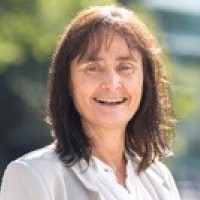
Talk Title: The Cassini Spacecraft Mission at Saturn
Date: 05 October 2020 at 12:00 (BST)
Speaker: Prof Michele Dougherty
View the lecture recording
Abstract: In September 2017, the NASA/ESA Cassini-Huygens spacecraft mission ended its 20 years in space by burning up in Saturn’s atmosphere. The end of mission orbits were designed to better understand the interior of Saturn and its magnetic field. These end of mission results will be described as well as some of the other surprising discoveries made during the orbital tour at Saturn, including water vapour plumes at the small moon Enceladus and implications this has for potential habitability.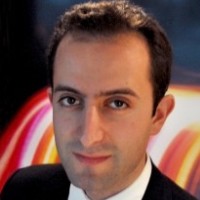 Talk Title: Theory and simulation of materials: understanding and designing materials from the atomic scale up
Talk Title: Theory and simulation of materials: understanding and designing materials from the atomic scale up
Date: 08 Octotober 2020 at 13:00 (BST)
Speaker: Prof Arash Mostofi
View the lecture recording
Abstract: Computational science now sits firmly alongside pure theory and experiment as one of the key pillars of scientific investigation. The challenges in physics, chemistry, biology and materials research that researchers are tackling in order to help address some of the most interesting technological (and societal) problems of both today and tomorrow are often of such complexity that it is impossible to make progress without a computational approach. I will focus on my principal area of expertise in theory and simulation of materials at the nanoscale using quantum mechanical simulations. I will largely avoid the underlying philosophical difficulties with quantum theory and instead highlight the development and practical application of quantum mechanics for understanding and predicting the behaviour of materials using specific examples of work from my research group.
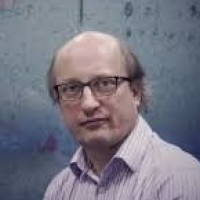 Talk Title: Phosphine Gas in the Cloud Decks of Venus
Talk Title: Phosphine Gas in the Cloud Decks of Venus
Date: 19 October 2020 at 12:00 (BST)
Speaker: Dr Dave Clements
View the lecture recording
Abstract: Measurements of trace-gases in planetary atmospheres help us explore chemical conditions different to those on Earth. Our nearest neighbour, Venus, has cloud decks that are temperate but hyper-acidic. We report the apparent presence of phosphine (PH3) gas in Venus’ atmosphere, where any phosphorus should be in oxidized forms, based on single line millimetre-waveband spectral detections (quality up to ~15 sigma) from the JCMT and ALMA telescopes. Atmospheric PH3 at ~20 parts-per-billion abundance is inferred. There is no other plausible line-identification, and exhaustive study of steady-state chemistry and photochemical pathways finds no viable abiotic phosphine-production routes in the atmosphere, clouds, surface and subsurface, nor from lightning, volcanic or meteoritic delivery. Phosphine could originate from unknown photochemistry or geochemistry, or, by analogy with biological production of phosphine on Earth, from the presence of life. Other PH3 spectral features should be sought, while future in-situ cloud and surface sampling could examine sources of this gas.
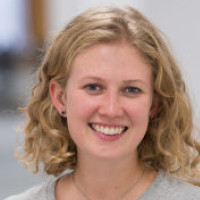 Talk Title: Artificial Quantum Matter
Talk Title: Artificial Quantum Matter
Date: 09 November 2020 at 12:00 (GMT)
Speaker: Dr Hannah Williams
View the lecture recording
Abstract: Matter is made up of interacting particles, in order to truly understand how the universe around us behaves on a quantum level we need to simulate such systems. Theorists have done a good job so far of creating the maths and tools we need to achieve this, but they hit a brick wall when trying to simulate systems of more the 40 particles. To overcome this Feynman suggested building a computer out of "quantum mechanical elements which obey quantum mechanical laws", and this is exactly what many people are trying to do. I am working on an experiment which uses individual atoms trapped in an array of optical microtraps "tweezers". In this talk I will tell you why quantum simulators are important, describe the experimental setup and show exciting new results where we go far beyond what is possible with a classical computer.
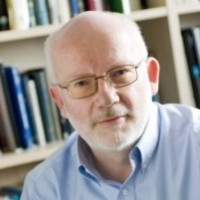 Talk Title: Modelling Burning Thermonuclear Plasmas
Talk Title: Modelling Burning Thermonuclear Plasmas
Date: 23 November 2020 at 12:00 (GMT)
Speaker: Prof Steven Rose
View the lecture recording
Abstract: Considerable progress towards the achievement of thermonuclear burn using Inertial Confinement Fusion has been achieved at the National Ignition Facility in the USA in the last few years. When a burning thermonuclear plasma is achieved in the laboratory it will provide a unique and extreme plasma environment and this talk will look at our modelling of such a plasma. We will examine how fundamental plasma processes, many, but not all of which have been studied in astrophysical plasma environments, play an important role. We will see how the use of machine learning has allowed us to improve our design of experiments. Finally we will also look at the possibilities that a burning thermonuclear plasma would give us to study fundamental physics, including studies of Quantum Electrodynamics and the replication and exploration of conditions that last occurred in the first few minutes after the Big Bang.
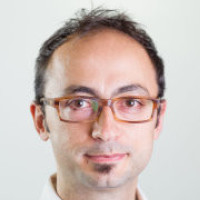 Talk Title: Unconventional Laser from Nanostructure Materials
Talk Title: Unconventional Laser from Nanostructure Materials
Date: 07 December 2020 at 12:00 (GMT)
Speaker: Dr Riccardo Sapienza
View the lecture recording
Abstract: Conventional nanophotonic schemes minimise multiple scattering to realise a miniaturised version of beam-splitters, interferometers and optical cavities for light propagation and lasing. Here instead, we introduce a nanophotonic network built from multiple paths and interference, to control and enhance light-matter interaction via light localisation. The network is built from a mesh of subwavelength waveguides and can sustain localised modes and mirror-less light trapping stemming from interference over hundreds of nodes. With optical gain, these modes can easily lase, reaching ~100 pm linewidths. We introduce a graph solution to the Maxwell’s equation which describes light on the network and predicts lasing action. In this framework, the network optical modes can be designed via the network connectivity and topology, and lasing can be tailored and enhanced by the network shape. Nanophotonic networks pave the way for new laser device architectures, which can be used for sensitive biosensing and on-chip optical information processing.
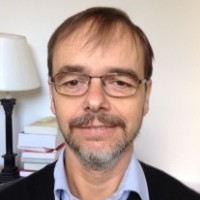 Talk Title: Solving the Many-Electron Schrödinger Equation with Deep Neural Networks
Talk Title: Solving the Many-Electron Schrödinger Equation with Deep Neural Networks
Date: 01 February 2021 at 12:00 (GMT)
Speaker: Prof Matthew Foulkes
View the lecture recording
Abstract: Given access to accurate solutions of the many-electron Schrödinger equation, nearly all chemistry could be derived from first principles. Exact wavefunctions of interesting chemical systems are out of reach because they are NP-hard to compute in general, but approximations can be found using polynomially-scaling algorithms. The key challenge for many of these algorithms is the choice of wavefunction approximation, or Ansatz, which must trade-off between efficiency and accuracy. Neural networks have shown impressive power as accurate practical function approximators and promise as a compact wavefunction Ansatz for spin systems, but problems in electronic structure require wavefunctions that obey Fermi-Dirac statistics. Here we introduce a novel deep learning architecture, the Fermionic Neural Network, as a powerful wavefunction Ansatz for many-electron systems. The Fermionic Neural Network is able to achieve accuracy beyond other variational quantum Monte Carlo Ansätze on a variety of atoms and small molecules. Using no data other than atomic positions and charges, we predict the dissociation curves of the nitrogen molecule and hydrogen chain, two challenging strongly-correlated systems, to significantly higher accuracy than the coupled cluster method, widely considered the most accurate scalable method for quantum chemistry at equilibrium geometry. This demonstrates that deep neural networks can improve the accuracy of variational quantum Monte Carlo to the point where it outperforms other ab-initio quantum chemistry methods, opening the possibility of accurate direct optimisation of wavefunctions for previously intractable molecules and solids.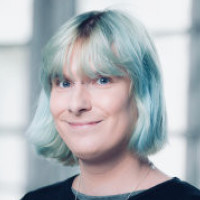 Talk Title: Exploring the Complex Problem of Plasma Turbulence from Space
Talk Title: Exploring the Complex Problem of Plasma Turbulence from Space
Date: 03 February 2021 at 12:00 (GMT)
Speaker: Dr Julia Stawarz
View the lecture recording
Abstract: From our own solar system to black hole accretion discs and even galaxy clusters, the Universe is filled with a churning gas of charged particles, known as plasma, that undergoes complex, seemingly chaotic, turbulent motions. Describing such turbulent motions in environments such as the ocean and atmosphere on Earth has long been one of the major unsolved problems in classical physics and, in the case of plasmas, the interaction with electric and magnetic fields and potential lack of particle collisions provides additional layers of complexity. Fortunately, a number of recently launched spacecraft missions, such as NASA’s Parker Solar Probe and Magnetospheric Multiscale missions and ESA’s Solar Orbiter, are providing unprecedented new measurements of the plasma in our solar system. In this talk, I will discuss why plasma turbulence is such a challenging, yet important, phenomenon to study and how cutting-edge spacecraft, including those in which Imperial College is playing a leading role, are providing unique new opportunities to explore the fundamental physics of this enigmatic phenomenon.
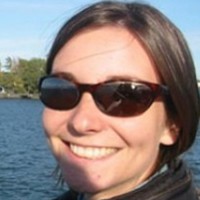 Talk Title: Evaluating greenhouse gas emissions using atmospheric measurements
Talk Title: Evaluating greenhouse gas emissions using atmospheric measurements
Date: 15 February 2021 at 12:00 (GMT)
Speaker: Dr Heather Graven
View the lecture recording
Abstract: Emissions of greenhouse gases are causing global climate change and its impacts, such as sea level rise and more frequent extreme weather events. Fossil fuel combustion is the main cause of greenhouse gas concentrations increasing in the atmosphere but other process such as deforestation, farming and waste management are also important. Accounting techniques are typically used to calculate emissions from each activity, but these calculations could be biased or miss out some sources. I will present on methods we are developing to evaluate greenhouse gas emissions using atmospheric measurements. By observing variations in greenhouse gases in the atmosphere, we can estimate the fluxes of the greenhouse gases at Earth's surface. To do this we need to account for how the gases are mixed and transported in the atmosphere using an atmospheric model. We also need to separate the influence of human activities from natural processes. In our work we use a wide range of physics including laser spectroscopy, accelerator mass spectrometry, fluid dynamics and computing.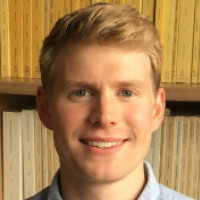 Talk Title: Advancing biomedical imaging using nonlinear fibre optics
Talk Title: Advancing biomedical imaging using nonlinear fibre optics
Date: 01 March 2021 at 12:00 (GMT)
Speaker: Dr Timothy Runcorn
View the lecture recording
Abstract: When very intense laser light interacts with ordinary materials such as glass, new colours of light can be generated through nonlinear optical processes. Optical fibres, which are the backbone of the internet, can be used to both generate very intense laser light and simultaneously are an ideal medium for nonlinear optical interactions. By harnessing these nonlinear optical effects, intense laser light can be generated with colours that no existing laser technology can produce. One important application of this technology is in developing light sources for microscopes, where intense visible light is needed to excite and manipulate the cells and molecules in our bodies. In this talk, I will give an overview of how nonlinear fibre optics can be used to advance the state of the art in biomedical imaging with potential future applications in, for example, bowel cancer screening. 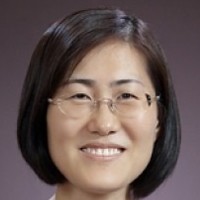 Talk Title: Hard Electronics with Soft Processable Materials
Talk Title: Hard Electronics with Soft Processable Materials
Date: 15 March 2021 at 12:00 (GMT)
Speaker: Prof Ji-Seon Kim
View the lecture recording
Abstract: Solution-processable organic (molecular) semiconductors combine the semiconductor properties traditionally associated with inorganic materials with the more desirable properties of soft plastics. Moreover, the organic syntheses of these materials allow for great flexibility in the tuning of their electronic and optical properties. By combining these properties, the field of soft electronics using organic semiconductors has developed rapidly over the last 30 years from fundamental laboratory discovery into a significant materials and manufacturing technology for a range of thin-film electronics applications including displays, solar cells, transistors and biosensors. In this talk I will highlight the progress and key challenges in this area.


